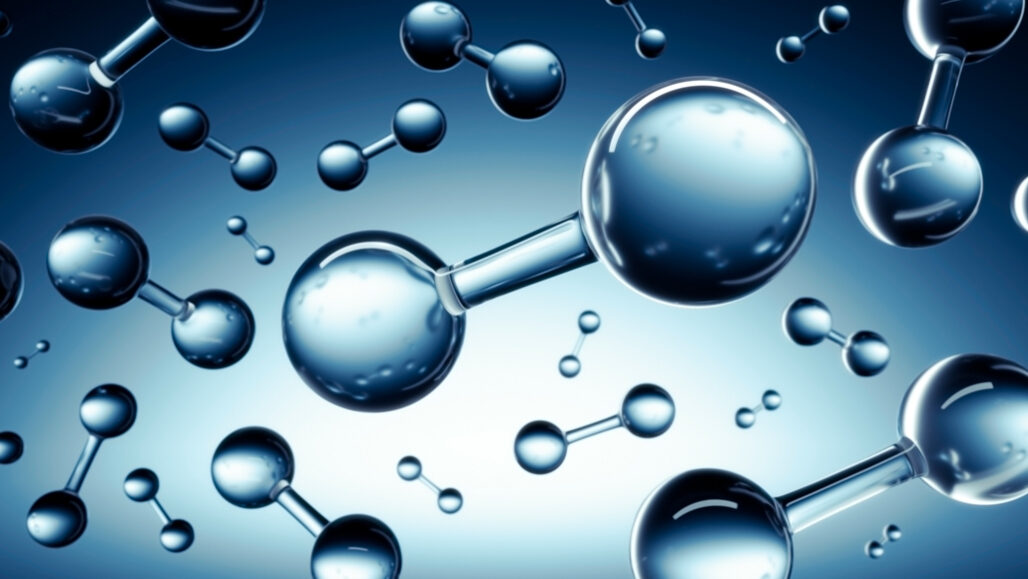博文
光子穿过氢分子的旅程是有史以来最短的事件
|||
光子穿过氢分子的旅程是有史以来最短的事件
诸平
The shortest duration ever measured is 247 zeptoseconds — the time it takes for a particle of light, or photon, to get from one side of a hydrogen molecule (illustrated) to another.
PETERSCHREIBER.MEDIA/ISTOCK / GETTY IMAGES PLUS
据玛丽亚·特明(Maria Temming)2020年10月27日发表于《科学新闻》(Science News)的报道,光子从氢分子(H2)的一侧(如图示)到达另一侧所需的时间,大约是247仄普托秒(about 247 zeptoseconds, 247 zs),即247×10-21 s。这是单个光子穿过氢分子所需的时间,也是有史以来最短的持续时间。相关研究结果于2020年10月16日在《科学》(Science)杂志上发表——Sven Grundmann, Daniel Trabert, Kilian Fehre, Nico Strenger, Andreas Pier, Leon Kaiser, Max Kircher, Miriam Weller, Sebastian Eckart, Lothar Ph. H. Schmidt, Florian Trinter, Till Jahnke, Markus S. Schöffler, Reinhard Dörner. Zeptosecond birth time delay in molecular photoionization. Science, 16 Oct 2020: Vol. 370, Issue 6514, pp. 339-341. DOI: 10.1126/science.abb9318
研究者在文章指出,这个间隔大约为247 zs (1 zs=10-21 s) 。新的观察结果使物理学家可以在全新的高度上目睹光与物质的相互作用。物理学家将X射线光的粒子照在气体中的氢分子上。当每个光子穿过一个H2分子时,它会从一个氢原子踢开电子,然后是另一个氢原子。因为电子可以表现出波状行为( electrons can exhibit wavelike behavior),所以光子与电子的两次撞击事件激发了电子波的扩散和融合,这类似于一粒石子跳过平静的池塘水面两次而形成的波纹。这些波的波峰和波谷重叠形成了干涉图样(interference pattern),研究人员使用一种称为反应显微镜(reaction microscope)的仪器观察到了该干涉图样。
如果同时形成了电子波,则干涉图案将围绕H2分子的中心对称。但是,研究合作者,德国法兰克福歌德大学(Goethe University in Frankfurt, Germany)的物理学家斯文·格伦德曼(Sven Grundmann)说,由于一个电子波在另一电子波之前形成,并且有更多的时间扩散,因此波图向第二电子波移动。这一变化使研究人员可以计算出两个电子波发射之间的247 zs的时间延迟。根据光速和已知氢分子直径进行计算结果与团队的期望值相吻合。
过去的实验观察到粒子相互作用的时间短至阿秒(attoseconds,as)级(as short as attoseconds),1 as=10-18 s,是1 zs的1000倍。所以说这次单个光子穿过氢分子所需的时间是有史以来最短的。更多信息请注意浏览原文或者相关报道。
The travel time of light in a molecule
There is currently considerable interest in experimental studies of various ultrafast processes. Of particular interest are the real-time dynamics of photoionization, one of the most fundamental processes caused by the light-matter interaction, in which the absorption of a photon leads to the ejection of an electron and the formation of anion. Using an electron interferometric technique, Grundmann et al. report a birth time delay on the order of a few hundred zeptoseconds between two electron emissions from the two sides of molecular hydrogen, which is interpreted as the travel time of the photon across the molecule. The proposed technique is generally applicable to more complex systems, and further studies are necessary to support this interpretation.
Abstract
Photoionization is one of the fundamental light-matter interaction processes in which the absorption of a photon launches the escape of an electron. The time scale of this process poses many open questions. Experiments have found time delays in the attosecond (10−18 seconds) domain between electron ejection from different orbitals, from different electronic bands, or in different directions. Here, we demonstrate that, across a molecular orbital, the electron is not launched at the same time. Rather, the birth time depends on the travel time of the photon across the molecule, which is 247 zeptoseconds (1 zeptosecond = 10−21 seconds) for the average bond length of molecular hydrogen. Using an electron interferometric technique, we resolve this birth time delay between electron emission from the two centers of the hydrogen molecule.
https://wap.sciencenet.cn/blog-212210-1256148.html
上一篇:牛津疫苗在老年人中产生免疫反应
下一篇:化学领域的数字化突破,可能会改变制药行业
